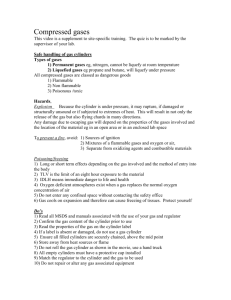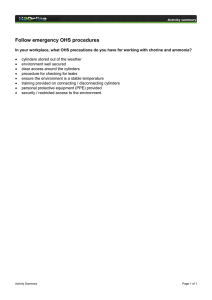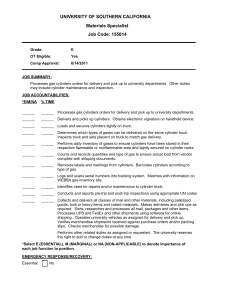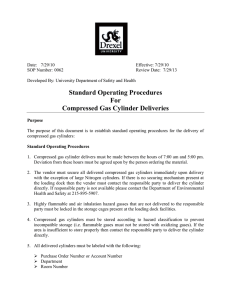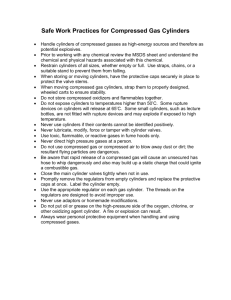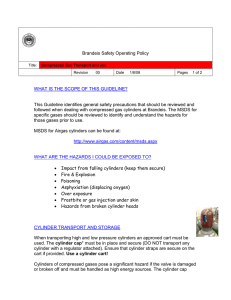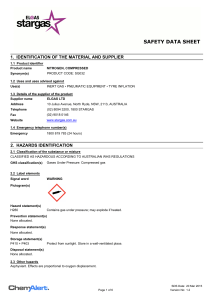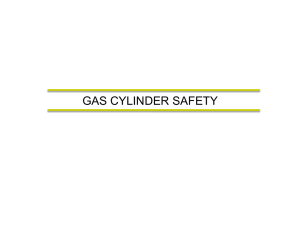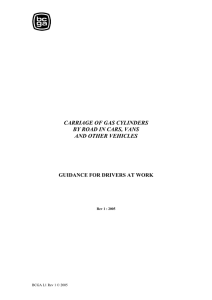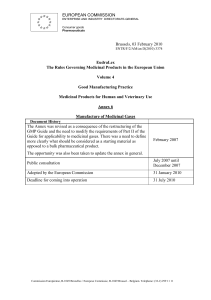Compressed Gases
advertisement
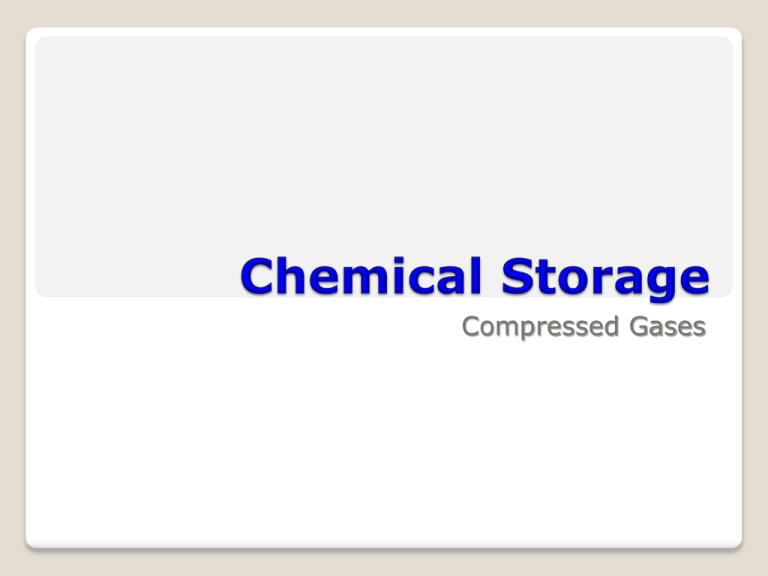
Compressed Gases Where & How Depends Upon 1 . Type & characteristics of gas: • Pyrophoric • Flammable • Toxic • Corrosive • Inert 2. Size of cylinder / volume of gas. 3. Location of use. Consideration needs to be given to containment and ventilation, compatibility, and protecting cylinders from damage. Storage requirements for toxic and flammable gases vary depending upon the quantity found in the particular control area of the building. Note: typically the entire floor of a building accounts for a control area, however there are three control areas on the third floor of the Clyde building. Contact the college Health & Safety Officer (422-6589) if you have questions. Compressed gases arrive with a Safety Data Sheet (SDS) from the manufacturer. Always review the SDS when determining how to properly store the gas cylinder. Always store gases according to compatibility. Review the SDS to determine compatibility NOTE: MATERIAL SAFETY DATA SHEETS (MSDS) ARE BEING REPLACED WITH SDS. Incompatible gases can be separated by: 1. Storing at least 20 feet apart; or 2. Using a properly designed physical barrier that has a fire rating of at least 30 minutes At minimum, a five foot firewall with a fire rating of 1/2 hour Storage locations need to be: Dry fire resistant properly ventilated located away from sources of ignition Maintained between 41o F and 125o F If the cylinder will accommodate a valve protection cap then keep the cap in place when the cylinder is not in use. Secure cylinders at all times in an upright position to a *stationary object when not being transported. Cylinders must be restrained at two points, near 2/3 and 1/3 the cylinder height. Chains are preferred because if straps are used they can be done up wrong and the cylinders could fall over even though the straps appear to be in place. *Welding gases can be secured on a welding cart while in use. Gas cylinders containing compressed toxic gas must be stored and used in a ventilated gas cabinet, or gas cylinder storage room. Exception - Small lecture bottles containing toxic gas can be used in a lab hood instead of a gas cabinet. Do Not Store LPG Cylinders Indoors Liquid petroleum gas (LPG) cylinders can release flammable gas through their pressure relief valve as their content is warmed. Gas Cylinder Storage 1 . Restrain the upper and lower portion of gas cylinders with chains [(or equivalent) avoid straps] 2. Keep away from ignition sources and exposed energized parts 3. Locate cylinders where they won’t be damaged by foot traffic or objects that could impact them 4. Distinguish “Empty” cylinders from full cylinders Please share this presentation with your co-workers. - End-
